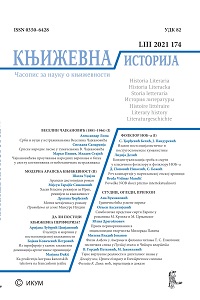Чајкановићева проучавања народних веровања о биљу у светлу когнитивних етноботаничких истраживања
Čajkanović’s Studies of Folk Beliefs about Plants through the Lens of Cognitive Ethnobotanical Research
Author(s): Marko Pišev, Mladen StajićSubject(s): Serbian Literature
Published by: Институт за књижевност и уметност
Summary/Abstract: Veselin Čajkanović’s The Dictionary of Serbian Folk Beliefs About Plants is one of the most exhaustive and systematic works dedicated to Serbian folklore and beliefs concerning the magical and healing properties of plants. In addition to Serbian ethnobotanical concepts, Čajkanović also included folk notions about diseases which relate to the folk religion, and especially to the demonological concepts of the traditional Serbian culture. His posthumously published study served as the basis for much subsequent ethnological research of ethnomedical notions in Serbia. In this paper, we read Čajkanović’s book as a comprehensive source of ethnographic data presented in the Dictionary, in order to a gain deeper understanding of the ways in which Serbian people perceived, defined, assorted and classified plants, turning their ecological environment into a resource for physical survival and sociocultural subsistence of the collective. The traditional Serbian rural communities lived in close contact with nature, and the ability to identify and associate similar species, to distinguish them from other species, and to communicate that knowledge to future generations, was crucially important for their sustentation. Our task in this paper will be to develop a mental model of the nature in traditional Serbian culture, as well as its inherent set of elementary principles by which the plant world was perceived and utilized in the context of the traditional Serbian village. Following this line, we will additionally try to demonstrate how Čajkanović’s rich and decades-old ethnobotanical material can be reinterpreted by adopting the more recent methodological frameworks of structural and cognitive anthropology.
Journal: Књижевна историја
- Issue Year: 53/2021
- Issue No: 174
- Page Range: 67-94
- Page Count: 28
- Language: Serbian

